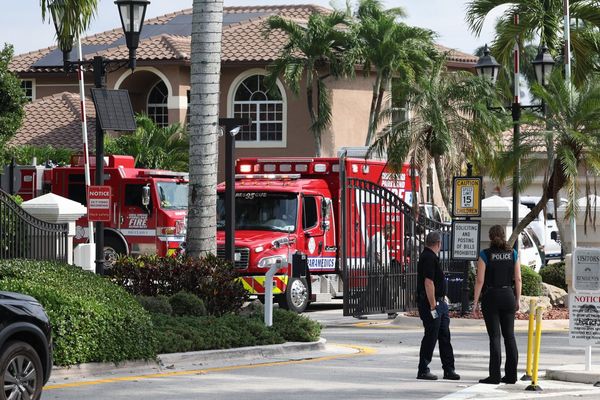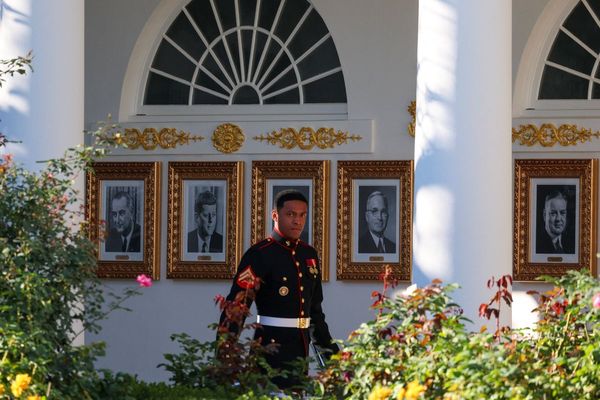
On Tuesday, Anthony Albanese made the front page of China’s official English-language state newspaper. So did the Cuban prime minister, Manuel Marrero Cruz, the Serbian prime minister, Ana Brnabic, and the South African deputy president, Paul Mashatile.
It was a sign of the importance of Albanese’s visit, but also a reminder that it’s not of the same significance in Beijing that it is in Canberra. The historic visit by Albanese to China this week was the first by an Australian prime minister in seven years. But analysts say the trip, which included a meeting between Albanese and the president, Xi Jinping, was more about clearing one problem Beijing saw as fixable from an increasingly full plate of dramas.
“[Albanese’s visit] was on China’s timing, but not its preferred terms,” the director of the Lowy Institute’s public opinion and foreign policy program, Ryan Neelam, said. “It was important to have one less problem in Australia, amid a whole host of problems.”
Relations with Australia have been frosty for years, but at the same time China’s domestic and international problems have mounted. Relations with the US are at historic lows, and attempts to repair fell alongside the Chinese spy balloon that US authorities shot out of the sky in February. It is becoming increasingly isolated from the West and its allies like Japan, the Philippines, and South Korea, who are banding together against Beijing’s growing regional aggression. Its alliance with Russia has caused major headaches, and domestically Xi is dealing with economic and unemployment troubles, and political scandals including at the ministerial level.
At the same time Xi is pursuing power on the global stage, setting up China as a responsible superpower alternative to the US and leader of the global south, including those nations whose representatives shared Albanese’s China Daily front page.
Key points of tension, from Beijing’s perspective, include the banning of Huawei technology from Australia’s 5G network, official suspicion of Chinese investment in critical infrastructure, a clumsy demand for a Covid-19 origins inquiry, criticism of China’s regional expansionism and human rights abuses, and what Beijing characterises as Canberra’s blind following of its global rival, the US.
On Sunday a China Daily editorial said Beijing – which hit Australia with trade tariffs and restrictions on wine, barley, lobster and other products which was estimated to cost Australia’s economy billions of dollars – had exercised “patience and restraint” after Australia went “beyond acceptable lines”.
The chosen narrative of Beijing had been to blame former prime ministers Scott Morrison in particular and his predecessor Malcolm Turnbull. The change of government in Australia provided a handy excuse for a restart of sorts, although Australia’s government has insisted that the relationship will not be returning to what it once was, and has largely maintained the same foreign policy approach.
Some of the trade restrictions were eased or lifted as concessions ahead of Albanese’s visit. “The whole reason this meeting happened was that China decided it was no longer in its interest to be punishing Australia for a range of things,” said Neelam.
A key question about the meeting’s impact is “whether this is a reversal by Beijing on its coercive approach to Australia or part of a long game to shape the politics and policy of the Australia-China relationship,” said Mark Harrison, a senior lecturer in Chinese Studies at the University of Tasmania.
“I think it is both in the sense that Beijing’s decision to apply trade sanctions and diplomatic pressure might be seen as a failure and a misreading of Australia, but Beijing is now seeking to maximise the benefit to its position of removing those measures and ending its belligerent tone.”
Beijing’s primary desires from Australia – its support for China’s admission to the Comprehensive and Progressive Agreement for Trans-Pacific Partnership (CPTPP), and a dialling back of its US alliance and Asia-Pacific engagement – are unlikely to eventuate.
“There are some areas they will be disappointed, the question is how they react when they don’t get what they want now, and how they react if they consistently don’t get what they want,” said Neelam.
So far China’s coverage of the visit has been unanimously positive. State media reports dutifully echoed official readouts from the Chinese Communist party and government, that the trip demonstrated “win-win cooperation”, an “opening up of the future” and the return of Australia to “the right path” to take bilateral relations forward after years of tension.
“China is very good at seizing the narrative,” said Neelam. “Domestically, which is what it cares about the most, it wouldn’t frame this as China not having achieved any of its objectives. It would see this as the Albanese government responding to pressure and coming back to the table and coming back to the right track and right way of thinking.”







